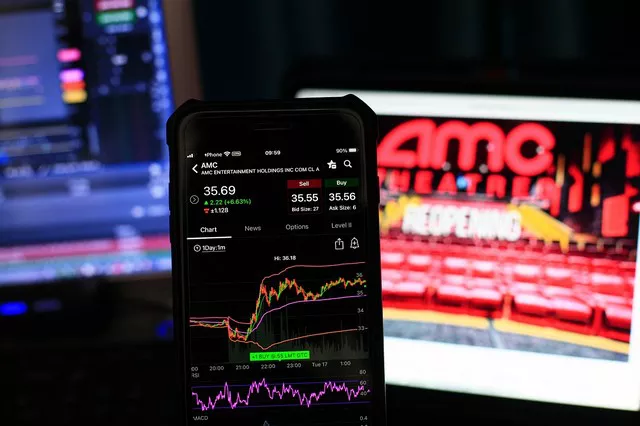Market futures are an essential aspect of the financial world, providing valuable insights into the future direction of various asset classes. As investors and traders navigate the complexities of global markets, understanding the current state of market futures becomes crucial.
What are Market Futures?
Market futures are derivative contracts that obligate parties to buy or sell an underlying asset at a predetermined price on a specified future date. These contracts are traded on organized exchanges and serve as essential risk management tools for participants across various industries. The most common types of market futures include equity index futures, commodity futures, currency futures, and interest rate futures.
Significance of Market Futures
Price Discovery: Market futures play a vital role in price discovery, reflecting the collective expectations of market participants about the future value of an asset.
Risk Management: Hedgers utilize market futures to mitigate price volatility and protect against adverse price movements in the physical market.
Liquidity: The high trading volumes in futures markets provide enhanced liquidity, allowing traders to enter and exit positions with relative ease.
Leverage: Futures contracts allow investors to gain exposure to a more substantial position than the capital they put up as margin.
Portfolio Diversification: Incorporating market futures in a diversified portfolio can help spread risk and potentially improve overall returns.
Current State of Equity Index Futures
Equity index futures represent contracts based on the performance of a specific stock market index, such as the S&P 500, Dow Jones Industrial Average (DJIA), or NASDAQ. As of the latest data available, equity index futures are experiencing a bullish trend, reflecting positive market sentiment and a healthy appetite for risk.
The S&P 500 futures, for instance, are showing steady growth, primarily driven by strong corporate earnings, improving economic indicators, and optimism surrounding monetary policy. Similarly, the NASDAQ futures are displaying resilience, with technology companies leading the charge.
Current State of Commodity Futures
Commodity futures encompass a wide range of raw materials, including gold, silver, crude oil, natural gas, agricultural products, and more. Commodity futures are influenced by a combination of supply-demand dynamics, geopolitical events, and macroeconomic factors.
As of the latest data, crude oil futures are experiencing volatility due to geopolitical tensions, fluctuations in global demand, and supply disruptions. Gold futures are showing signs of strength, acting as a safe-haven asset amid economic uncertainties and inflation concerns.
Agricultural commodities like corn, wheat, and soybean futures are subject to weather conditions and supply chain disruptions, which can impact prices significantly. As such, they often experience periodic spikes and dips.
Current State of Currency Futures
Currency futures are contracts that represent the exchange rate between two currencies. They are influenced by economic indicators, interest rate differentials, geopolitical developments, and market sentiment.
The US dollar, as the world’s primary reserve currency, is a key player in currency futures. As of the latest data, the US dollar futures are showing mixed performance against other major currencies like the Euro, Japanese Yen, and British Pound. Factors influencing these movements include inflation expectations, interest rate decisions, and geopolitical uncertainties.
Current State of Interest Rate Futures
Interest rate futures are contracts that enable market participants to speculate on or hedge against changes in interest rates. They are influenced by central bank policies, economic growth prospects, and inflation expectations.
As of the latest data, interest rate futures are experiencing uncertainty amid varying central bank stances. The Federal Reserve’s signaling of potential rate hikes has led to fluctuations in interest rate futures, impacting bond prices and yields.
Factors Influencing Market Futures
Economic Indicators: Key economic data, such as GDP growth, employment figures, inflation rates, and manufacturing data, can significantly influence market futures.
Geopolitical Events: Political developments, trade tensions, and geopolitical conflicts can trigger market uncertainty and impact futures prices.
Monetary Policy: Decisions made by central banks regarding interest rates and monetary stimulus have a profound effect on interest rate and currency futures.
Corporate Earnings: Earnings reports of major companies can drive equity index futures, as they provide insight into the health of the economy and specific sectors.
Global Supply and Demand: Commodity futures are sensitive to changes in global supply and demand for various commodities.
Investor Sentiment: Market sentiment, fear, and greed play a significant role in shaping futures market movements.
Conclusion
Market futures serve as invaluable tools for investors and traders seeking to gain insights into the future direction of various asset classes. Understanding the current state of market futures, whether it be in equity index futures, commodity futures, currency futures, or interest rate futures, requires a comprehensive analysis of economic indicators, geopolitical events, and monetary policies. As markets continue to evolve, staying informed about the factors influencing market futures can empower investors to make well-informed decisions and navigate the complexities of the global financial landscape with confidence.

